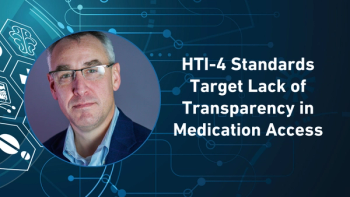
- Pharmaceutical Commerce - January/February 2013
Vision 2020: evolving markets, evolving business models
PwC's annual analysis sees bright spots in R&D practices, while global economic troubles will constrain healthcare spending
Pharma 2020: From Vision to Decision is the title of this year’s analysis, from PricewaterhouseCoopers’ Pharmaceutical, Medical Device and Life Sciences Group. In wide-ranging commentary, PwC predicts that a new “golden era” of the biopharma industry could be coming, but there is much to do to get the industry’s house in order. By 2020, the global biopharma industry could be worth $1.6 trillion, representing 10—15% of worldwide healthcare spending. With the right products, however, biopharma’s share could rise to 20%. One way to do this, obviously, is to keep raising prices faster than overall healthcare costs are, but the real trick will be to use outcomes research and other forms of evidence-based medicine to demonstrate the value (and avoided healthcare cost) of new products.
The problem is that while there are “pockets of great wealth” in emerging markets, as well as a growing middle class that will demand higher levels of healthcare, current economic conditions are poor. Multinational pharma companies are falling into four distinct categories in how they confront these markets: from “innovation-driven”—selling a full proprietary portfolio at high prices; to “market-driven”—expanding aggressively with small molecules, generics and local formulations. In between are a stance of selling a limited range of proprietary products and building market presence with local investment.
Clinical trial design
In the research arena, PwC has two pieces of advice: pay attention to emerging alternatives to the standard, Phase III practice of clinical trials; and use a portfolio-management strategy to prune research projects to those that meet market needs.
The alternatives to traditional Phase III trials (which can typically run into the hundreds of millions of dollars): the “N-of-1” trial and the “in life” trial. In the former, individuals or a few patients use an experimental drug, and treatment regimens pass through successive drug types, with close monitoring of end results. In-life trials put the treatment regimen solidly in the everyday life of patients; this can be especially useful for determining the economic value of the treatment.
In looking at the portfolios of major pharma companies, PwC finds a wide disparity between those that run their research projects effectively (both by selecting the right products to develop and by assessing the potential value” of the treatment) and those that do not. The ratio of “pipeline risk-adjusted net present value to (NPV) R&D expenditure varies from 3.63 for the highest performer to 0.73 for the lowest. (PwC is keeping the identities of these companies under its wraps.) The policy of managing the research portfolio is key: Companies need to continue to evaluate the potential market for a drug, even as it is researching it. Products that don’t fit the company’s business stance (high risk, high-margin blockbuster or specialty products with a limited market but relatively cost-effective clinical trial programs, or others) show what needs to be pruned.
“Ten years ago, a drug that made it to Phase III had an 80% chance of being approved; now, that percentage is down to 50%,” says Dr. Nick Davis, head of pharma strategy in the PwC group. “Pharma companies need to learn how to manage their risk profile.”
The full report is available from PwC at
Articles in this issue
almost 13 years ago
How to prevent 'agg spend' sunburnalmost 13 years ago
FedEx expands its SenseAware service for temperature-controlled shippingalmost 13 years ago
Pharma's stake in comparative effectiveness researchalmost 13 years ago
Liberating time in the Economy of Attentionalmost 13 years ago
Walgreens doubles down on 'flagship' neighborhood pharmaciesNewsletter
Stay ahead in the life sciences industry with Pharmaceutical Commerce, the latest news, trends, and strategies in drug distribution, commercialization, and market access.





